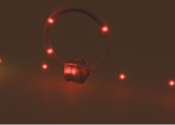Compact quantum light processing: New findings lead to advances in optical quantum computing
An international collaboration of researchers, led by Philip Walther at University of Vienna, have achieved a significant breakthrough in quantum technology, with the successful demonstration of quantum interference among ...









